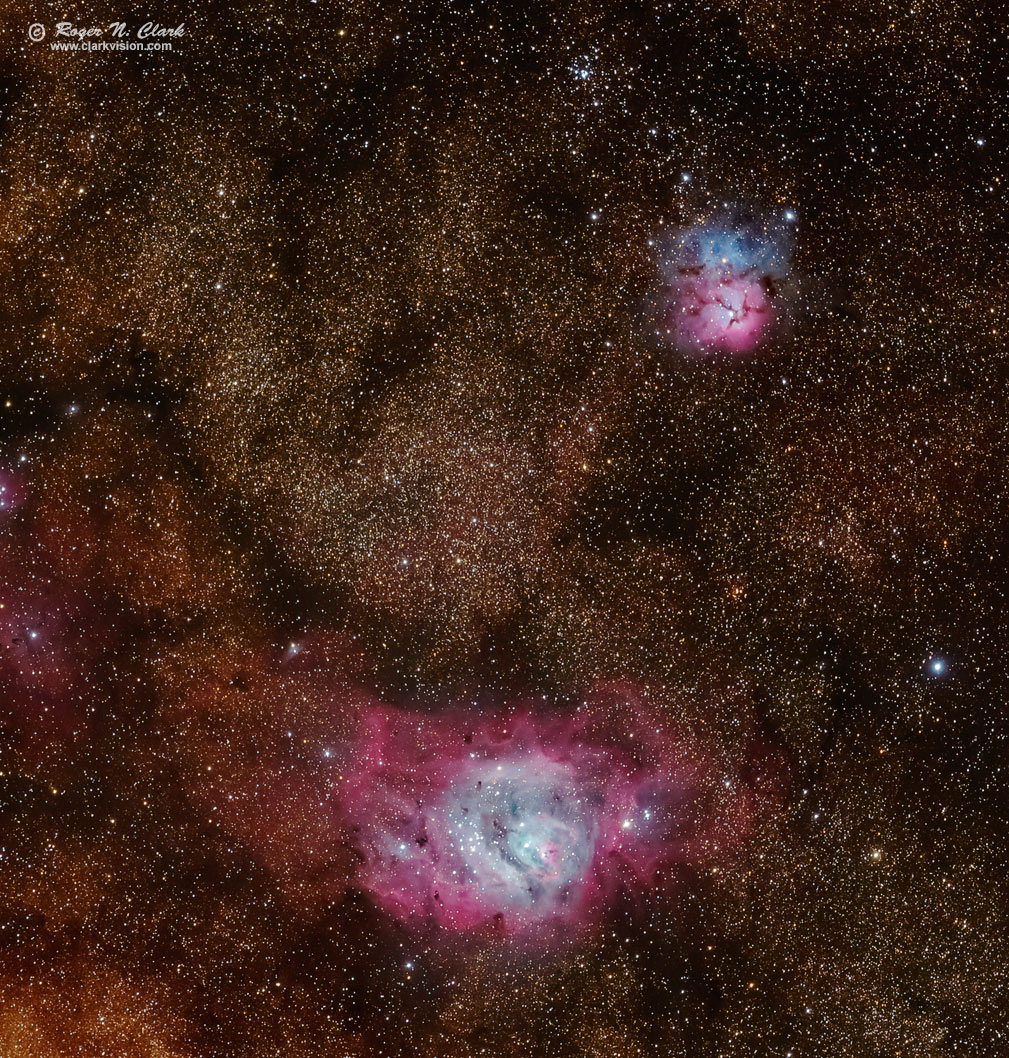| Home | Galleries | Articles | Reviews | New | About | Contact | Gallery Index | Previous |
Next |

| Home | Galleries | Articles | Reviews | New | About | Contact | Gallery Index | Previous |
Next |

M8, the Lagoon Nebula and M20, the Trifid Nebula in Sagittarius rises high in the summer for northern hemisphere observers. The nebulae are surrounded by brown dust in the Milky Way galaxy.
Technical. This image was obtained with a Canon 7D Mark II 20-megapixel digital camera and 300 mm f/2.8 L IS II lens at f/2.8 and ISO 1600. No dark frame subtraction, no flat fields. Tracking with an Astrotrac and no guiding. The 38 minutes total exposure (38 1-minute exposures). Stars to magnitude 16 were recorded.
The Exposure Factors, CEF, CEFA are measures of the relative amounts of light received from a subject. It can be used to fairly compare wildly different lens/telescope apertures and exposure times. For this image:
Modern DSLRs like the 7D Mark II include on sensor dark current suppression and low fixed pattern noise at ISOs around 1600 and higher, making no need for dark frame subtraction. Modern raw converters correct for light fall-off and also correct for hot/dead/stuck pixels. This makes processing low light images easy: simply align and average.
To learn how to obtain stunning images like this, please visit my Extensive Articles on Photography .
See my review of the Canon 7D Mark II and why it is so good for astrophotography: Canon 7D Mark II sensor analysis.
Keywords to this image = astrophoto-1 nebula Messier low-light digital_astro canon_7d2
Image ID: m8+m20.rnclark.c08.12.2015.38frames.d-c1-1009s.jpg
| Home | Galleries | Articles | Reviews | New | About | Contact |
Last updated November 03, 2016